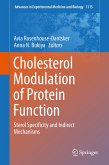While slowly unravelling the complexities of apoptosis in chapter one, the next three chapters individually elaborate on different classes of proteases that play key roles in the initiation, progression and execution of programmed cell death. The last two chapters complete this discussion by describing different laboratory methodologies and therapeutic advances involving apoptotic proteases. Protocols portraying in vitro and ex vivo colorimetric and fluorescence-based enzyme kinetic studies as well as cell death assays are explained in the fifth chapter. Preclinical in vivo models and non-invasive imaging in apoptosis to understand the complexities of disease progression and their contribution toward therapeutics is recounted in the last chapter.
The book spans topics related to both fundamental and applied biology. It would therefore be equally appealing and informative to scientists working in the field of apoptosis and those who are investigating mechanisms of proteases and enzymes in general. The protocols would certainly benefit both graduate and undergraduate students working in the related fields and provide useful leads for drug design to translational biologists involved in neurodegeneration and cancer research.
Dieser Download kann aus rechtlichen Gründen nur mit Rechnungsadresse in A, B, BG, CY, CZ, D, DK, EW, E, FIN, F, GR, HR, H, IRL, I, LT, L, LR, M, NL, PL, P, R, S, SLO, SK ausgeliefert werden.
"This is a monograph on proteolysis via programmed cell death via caspase and granzyme mediated destruction in neurodegeneration. I recommend it for biochemists, cell biologists, & neurologists." (Joseph J. Grenier, Amazon.com, November, 2015)









